
I recently hopped over for an alpine excursion to Andermatt, Switzerland and whilst there, I continued my investigations into the Apple Watch Series 3. I’ve taken detailed looks into its baby brothers’ capabilities on my blog before, both here and here; as a kale-munching millennial, I’m a technivore who craves machinery that’ll eliminate guesstimation and present me with solid, irrefutable data to track my fitness progress. Unlike swimming and running, however, skiing is the type of cardio which historically has been all but impossible to track with anything other than a vague approximation. But thanks to the GPS module and an integrated altimeter, that’s no longer the case… what I found was rich data that massively complemented and enhanced the fun of my slopeside accomplishments! Read more below…
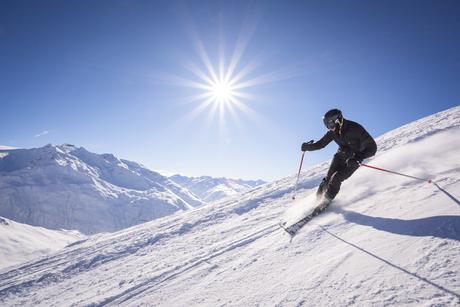
Whilst I’m hardly in the league of a Frida Hansdotter or Lindsey Vonn (though I’m ambitious!), I do absolutely love the benefits that a ski break can bring (recent post running through said benefits HERE), and the idea of consuming a suite of analytics via my wrist strikes me as a revolutionary and fascinating insight, but also an obvious evolution to an opaque discipline! My time with the functionality was frankly effortless, with the data collection operation running in the background to track and evaluate my time on the slopes. I’m excited to share my findings with you!
I spent most of my time getting to know the newly launched app snoww, developed by skier Eddy Healey to suit beginners and experts alike, and for both skiers and snowboarders. I met Eddy, who talked about having “designed snoww thinking about quick interactions and glances while out on the mountain so these updates have helped us make it easy to record accurate, relevant metrics as well as create a fun and social experience for our users.”
So what does it do?
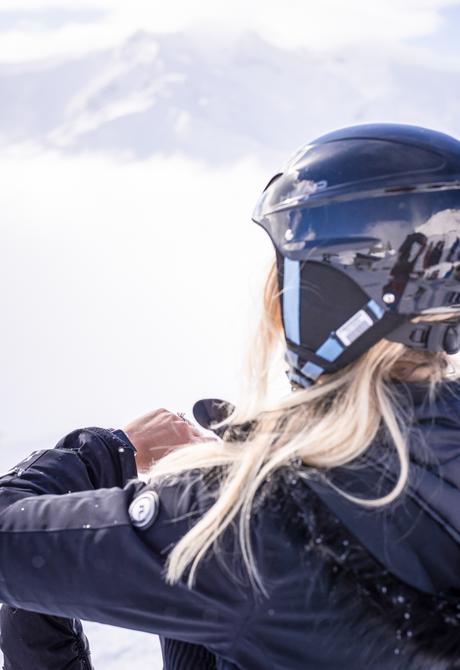
1) It frees up your hands…
Skiing is cumbersome at the best of time, and it’s not easy to stop, unzip jacket, take off gloves, delve into inner pockets, suffer the incursion of arctic wind, and then observe metrics on the phone, after unlocking it. With Apple Watch, I particularly appreciated the hands-free control with Siri on the iPhone and Apple Watch. Without having to press anything, and with the power of speech alone, I could just instruct Siri to start snoww tracking my runs, on demand. Despite being from a cold country, I’m always frozen, so never having to take off my cozy fluffy gloves when in the mountains is amazing!!!
2) It knows your altitude…
I wasn’t expecting this capability and thought it was quite neat; like the instrument cluster on an aircraft, the in-built barometric altimeter can detect if you’re ascending on a ski lift, or free-falling on a ski run, and tracks it automatically, so that the vertical descent stats are as accurate as realistically possible. Also, the smooth ascent profile of a ski lift can be recognized by Apple Watch, and doesn’t count as ‘work done’, so doesn’t corrupt your exertion statistics either.
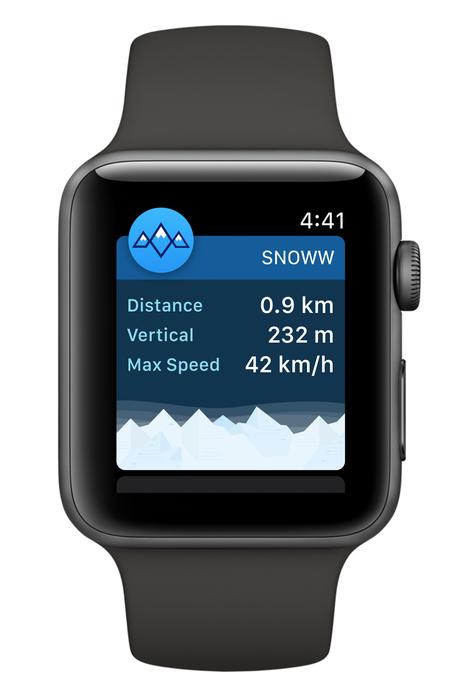
3) It counts your calories…
If you’re really going for it, your ‘active’ calorie measurements feed straight into Apple Watch and the Activity app, (the calorie estimates are based on Apple’s workout algorithms, which is informed by the heart rate sensor). I had no idea just how much energy is required/burned during a day’s worth of skiing, and was astounded by my numbers. It’s now possible to know at exactly which mouthful of cheese fondue you’ve entered calorie surplus!
4) It tallies up your runs…
Not only will it keep track of how many slopes you’ve skied, but also the total time spent on the slopes – all without using a morsel of mobile data allowance. That’s made possible via the built-in GPS and altimeter as well as custom workout APIs released in watchOS 4.2 meaning the device’s functionalities can talk to different apps now.
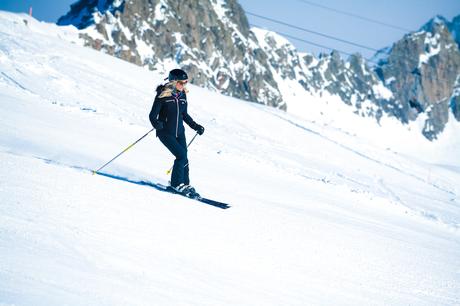
5) It encourages ‘Target Practice’…
With the location capabilities also come average and maximum speed displays. This quickly becomes quite competitive with friends, and anyone else there – locals and pros. It is the essence of humanity to know a boundary, and work towards surpassing it. You can also gift each other trophies for achieving milestones.
6) It lets you do the social thing…
Crystal-blue mountainscape photos need to be shared with friends around the world, and on Apple Watch, you can browse other snoww users’ shots. It’s also a pretty good live check on the weather around other nearby villages – as well as a window into any other fun social activities going on! It allows you to follow friends, compare vital ski stats, or compete with other skiers and snowboarders to climb your way to the top of your mountain’s leaderboard, lending rigor to the competition of skiing!
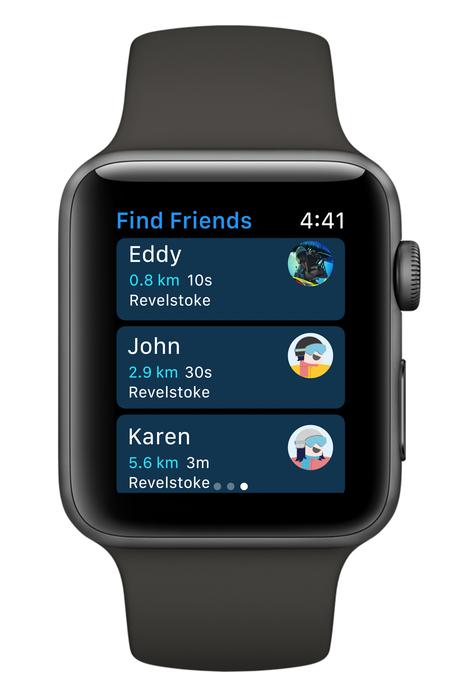
7) It knows when to start, and when to stop…
The snoww app automatically pauses logging when you’re stationary (‘chocolat chaud’ mode) and resumes when you mobilize again, meaning you’ll get credit towards the Activity rings only when you’re really earning it; meantime, the workout information will also be recorded to the Health app on iPhone, which is my single repository for health stats!
8) It knows where you are…
The mountains can be big, isolating, and lonely places at times; every skier will have temporarily lost another member of the party at some point, and trying to find them by describing your location is tricky; ‘I’m by the trees, there’s a lift nearby, and snow everywhere…’. By getting the ‘Find My Friends’ live locations straight to your wrist, you know where everyone is, all at once. Aside from the ‘peace of mind’ and safety benefits associated with that, it also saves potentially frosted hands from digging out your phone or potentially dropping and breaking your phone whilst on the lift!

9) It’s a 3D interactive piste map on your wrist…
It’s got terrain and satellite maps on the ‘run’ and ‘lift’ breakdowns. A little geeky perhaps, but if you’re into your skiing, definitely kinda cool! You can even replay your runs in 3D with speed heat-maps. And of course, you can then show off by sharing your day’s stats on Facebook, Twitter, and Instagram using customizable images.
10) Battery friendly
I was happy to experience that it’s possible to ride and record all day, without having exhausted my Apple Watch battery. The recording works deep in the backcountry without an internet connection because it’s not dependent on data exchange. A heavy day of use didn’t exhaust the battery.
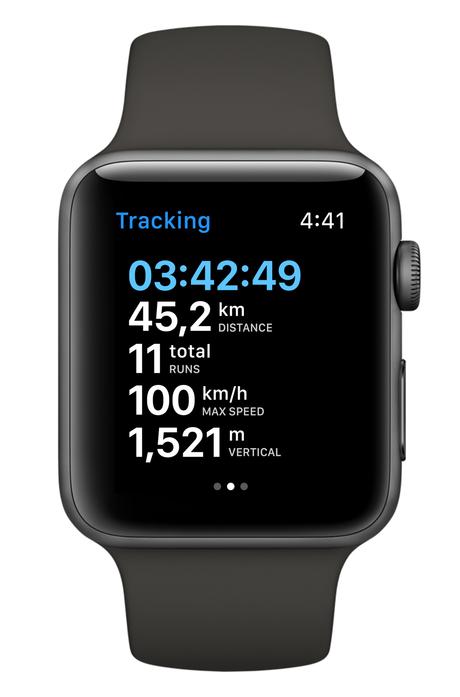
At the end of the day’s skiing escapades, you can access the app suite via your phone, extract even more detailed information, and evaluate your performance relative to friend’s ski summaries. While you technically can leave your phone behind now, I found better battery life and frankly superior accuracy by keeping the phone in my pocket still (as Apple Watch uses iPhone’s GPS if it’s nearby). As a modern skier in a data-driven, IoT-enabled, analytics-obsessed world, I couldn’t do without this to enhance the depth of every aspect of the skiing experience!
Faya x

